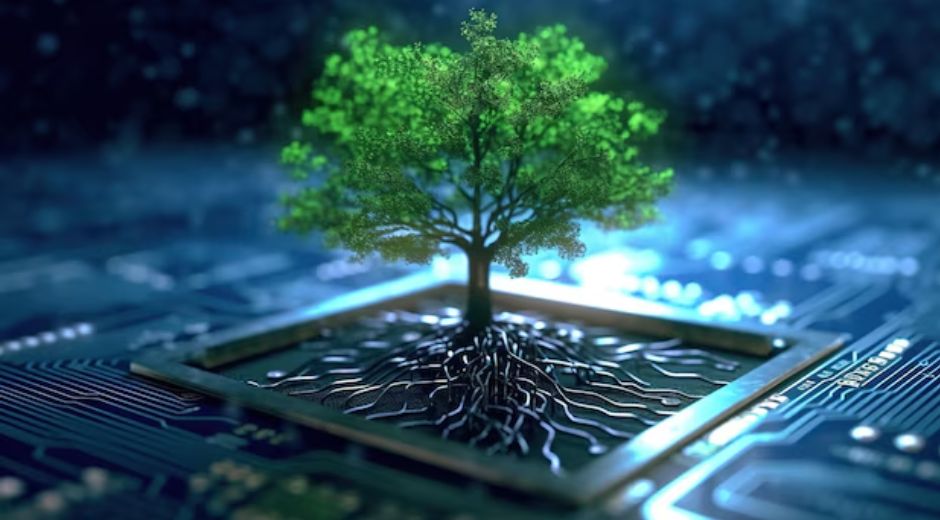Rainforest Canopy
The Rainforest Canopy is one of the most vibrant and vital layers of Earths tropical forests. This elevated green realm forms a continuous roof of leaves and branches that captures sunlight and moisture and supports a vast array of life. For anyone curious about biodiversity ecology or conservation the canopy offers a window into the complexity and resilience of natural systems. To learn more about related topics and ongoing projects visit bionaturevista.com for curated articles and guides.
What the Rainforest Canopy Is and Why It Matters
The Rainforest Canopy refers to the dense layer created by the crowns of tall trees in tropical forests. This layer intercepts the majority of incoming sunlight and creates a unique microclimate that differs from conditions on the forest floor. Temperatures wind patterns and moisture levels in the canopy are shaped by the dense foliage making this zone a distinct habitat. Because it captures and recycles rainfall and sunlight the canopy plays a crucial role in carbon storage and water cycling that affects local and regional climates.
Ecologically the canopy functions as a vertical home for organisms that rarely descend to the ground. Many species of birds mammals insects and plants have evolved to live primarily in the canopy where food and shelter are abundant. The structural complexity of the canopy also provides corridors that allow animals to move across great distances without touching the forest floor. This connectivity supports genetic exchange and resilience within forest populations.
Biodiversity Above the Ground
Life in the Rainforest Canopy is spectacular and often surprising. Epiphytic plants such as orchids and bromeliads thrive on tree branches drawing moisture and nutrients from the air and debris rather than soil. Lianas and climbing vines weave through the canopy creating natural bridges and additional habitat. Birds roost nest and hunt in the upper layers while primates use the canopy for foraging and travel. Many insect species including pollinators and herbivores have life cycles that are closely tied to canopy plants.
The canopy harbors both common species and rare endemics that exist nowhere else on Earth. Researchers continue to discover new species in canopy surveys illustrating how much remains unknown. The canopy is also a source of food for humans in some regions where fruits nuts and medicinal plants are harvested. Sustainable use of canopy resources depends on a deep understanding of ecological relationships and careful management.
Microclimate and Ecosystem Services
The Rainforest Canopy creates a buffer that helps regulate temperature and humidity for the entire forest. By intercepting rainfall the canopy reduces the impact of heavy downpour on the soil which helps prevent erosion. Evapotranspiration from leaves contributes to atmospheric moisture which can influence rainfall patterns both locally and at a distance. These processes make the canopy essential to water security for communities and ecosystems downstream.
In addition to water regulation the canopy stores large amounts of carbon in biomass. Protecting and restoring canopy cover is therefore a strategy for climate mitigation. Intact canopy systems support pollinators and predators that keep pest populations in check enhancing forest health and productivity. The combined services of pollination water regulation and carbon storage give the canopy global ecological importance.
Research and Ways Scientists Study the Canopy
Studying the Rainforest Canopy presents logistical challenges but modern techniques are unlocking new insights. Canopy cranes towers rope access and canopy walkways enable direct observation and sampling. Remote sensing tools such as lidar and high resolution satellite imagery allow scientists to map canopy structure and track changes across large areas. Acoustic monitoring and camera traps reveal patterns of animal use and behavior high above the ground.
Interdisciplinary projects often combine field based observations with laboratory analyses to measure carbon fluxes nutrient cycling and species interactions. Long term plots in the canopy help researchers understand how forests respond to natural disturbances and human pressures. As knowledge grows it informs conservation strategies that balance human needs with protection of critical habitat.
Threats to the Rainforest Canopy
Despite its importance the Rainforest Canopy faces growing threats. Deforestation for agriculture logging and infrastructure removes canopy cover and fragments forest habitat. Fragmentation isolates populations and alters microclimates making remaining patches more vulnerable to invasive species and fire. Climate change adds pressure through shifts in rainfall patterns and the frequency of extreme weather events that can damage canopy structure.
Illegal extraction and unsustainable harvest of canopy resources damages the complexity that supports so much biodiversity. Even selective logging can open the canopy to sunlight and wind altering the conditions that many canopy specialists depend on. Addressing these threats requires a combination of law enforcement community engagement and incentives for sustainable land use.
Conservation Strategies and Community Roles
Protecting the Rainforest Canopy starts with conserving intact forest and restoring degraded areas. Establishing protected areas and biological corridors helps maintain connectivity across landscapes. Community based conservation initiatives that provide alternative livelihoods and that recognize traditional knowledge are often more effective than top down approaches. Payment for ecosystem services schemes and sustainable forestry certification can create economic reasons for preserving canopy cover.
Education and citizen science are powerful tools for raising public awareness and for generating data. Schools universities and local groups can contribute to monitoring efforts and habitat restoration. Ecotourism when managed responsibly can provide financial support for conservation while giving people opportunities to experience canopy habitats in ways that foster stewardship.
How You Can Help
Individual actions add up to meaningful impact. Supporting organizations that protect tropical forests choosing products that are certified sustainable and advocating for policies that reduce deforestation are practical steps. You can also raise awareness by sharing verified information about canopy ecology and conservation with your community.
For those who manage digital content or who seek tools for outreach or research there are resources available to help scale effective work. For technology based solutions or promotional tools consider visiting Fixolix.com where services can assist in amplifying education and advocacy efforts.
Conclusion
The Rainforest Canopy is a living mosaic that sustains immense biodiversity and provides essential services to people and the planet. Protecting this dynamic layer requires research policy action and broad public engagement. By learning about the canopy supporting conservation initiatives and making mindful choices we can help ensure that future generations will inherit forests rich in life and resilience. For ongoing articles news and practical guides about forest ecosystems visit the main site at the end of this article to stay informed and involved.















